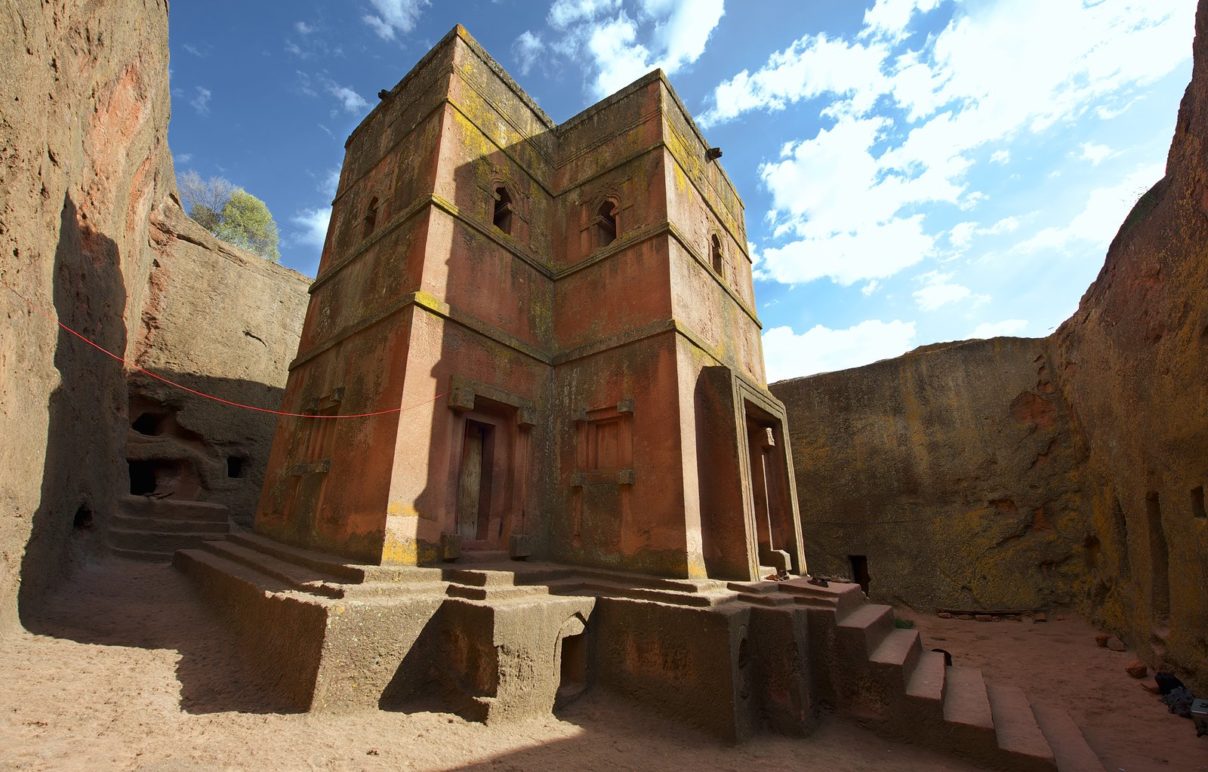
Beta Giyorgis (Church of St. George) is shaped from the inside-out and built by ONE unbroken piece of stone. This church is connected to the other ten sunken-stone churches through a series of elaborate tunnels.
Image courtesy of: Ancient Origins, photographed by: Dmitry Chulov
There are many stunning churches in Ethiopia, especially in Lalibela which has been an area for Christianity throughout time. Specifically though, there are eleven rock-hewn churches that remain a place of pilgrimage and devotion… these were carved out of rock in the 12th century, and they remain a source of stunning architecture still today.
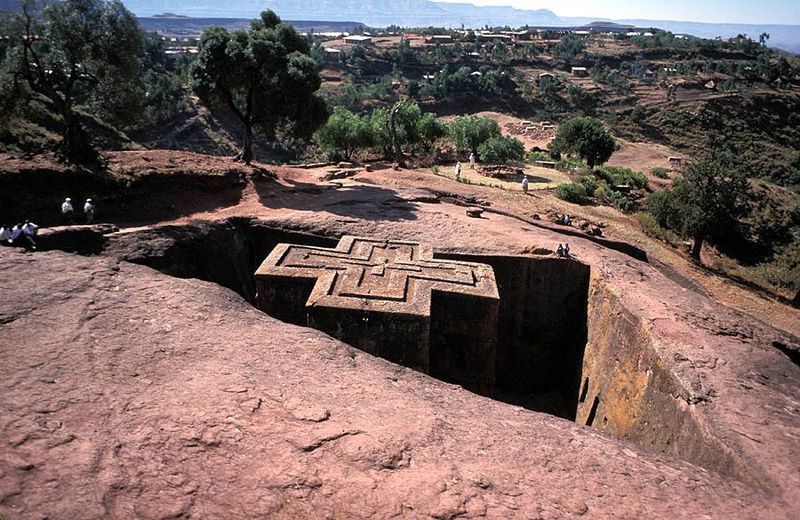
Beta Giyorgis (Church of St. George) arial view. From this view, it is apparent that this church is shaped like a cross. Bet Giyorgis sits on a stepped platform inside a 72 foot x 72 foot courtyard that is 36 feet deep.
Image courtesy of: Atlas Obscura
The churches’ exact ages remain unknown but legends mention that they were excavated during Gebre Mesquel Lalibela’s rule which took place at the beginning of the 13th-century. The legends also state that an angel came to Lalibela and asked him to build the churches. Men and angels worked together during the construction… the men would work throughout the day and the angels worked all night.
Lalibela was originally called Roha, but it eventually took the name of King Lalibela, who ruled around 1200 C.E. as part of the Zagwe Dynasty. His name is translated to mean “the bees recognize him as king”. Some renowned professors and experts propose that the churches were actually carved out of rock 500 years earlier and that Lalibela’s name became associated with him only following his death.
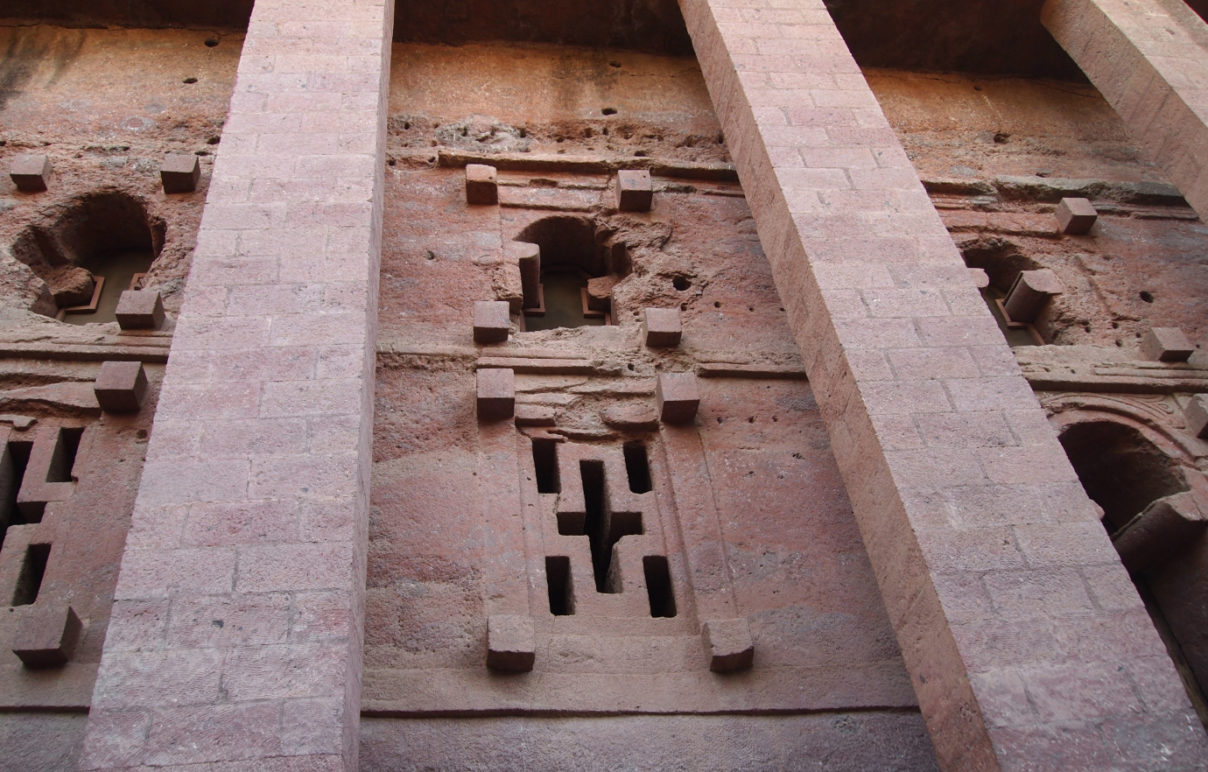
One of Bete Medhane Alem’s exterior walls.
Image courtesy of: Cat Bird in Africa
The churches were hewn from the living rock of monolithic blocks. The blocks were chiseled out to form doors, windows, columns, floors, and roofs. Further architecture included an extensive system of drainage ditches, trenches, and ceremonial passageways.
The eleven churches were constructed in two separate groups. The first group’s most impressive church is Bete Medhane Alem (Savior of the World), considered to be the largest monolith church on earth. The reddish-brown structure is carved deep into the volcanic rock and the roof-line follows an imaginary line to where the natural landscape would have existed. In order to reach the second group of churches, you have to pass through a series of trenches and tunnels that lead from one holy building to the next. Today, each church has a priest who, from time to time, goes behind a giant curtain that hides replicas of the Ark of the Covenant. The curtain keeps certain religious artifacts private and only priests are allowed to see those items.
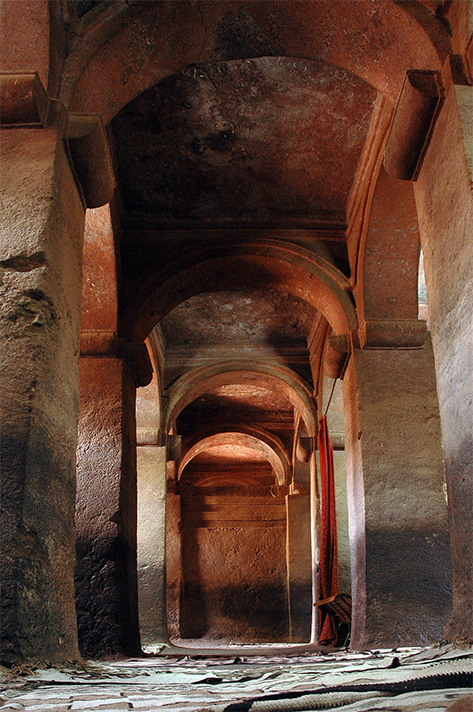
Inside Bet Madhane Alemm.
Image courtesy of: Ancient Origins, photographed by: Dmitry Chulov
The second group of churches is a collection of five structures, and Biete Ghiorgis (House of St. George) is isolated from these yet still connected by a system of trenches. Four of the churches are completely free-standing, attached to their “mother rock” only at the base. The remaining churches range from semi-detached to only being liberated from the rock at their facades.
These exceptional churches have been the focus of pilgrimages for Coptic Christians since the 12th-century. Along with the traditional vernacular circular houses in the surrounding area, this is a beautiful example of an ancient village layout. The whole of Lalibela offers testimony to the medieval and post-medieval civilization of Ethiopia.
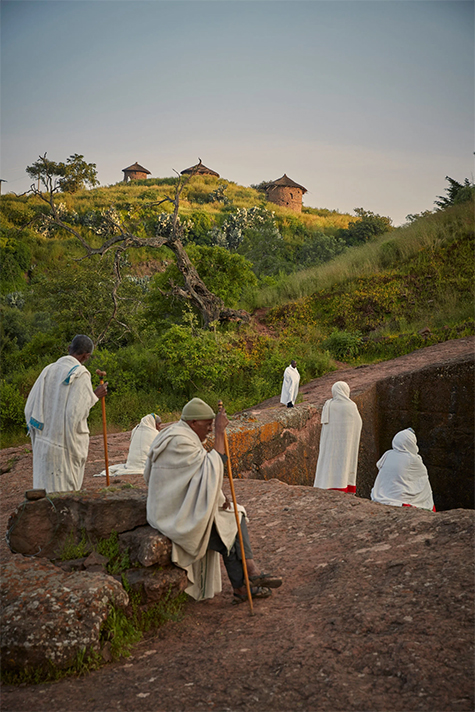
Image courtesy of: The New York Times, photographed by: Andy Haslam
Who knows if the King of Lalibela knew the lasting impact he would have on Christianity when he set out to build a symbol of the Holy Land once pilgrimages were rendered impossible due to the area’s state of current affairs. Within some of the churches lie replicas of the Tomb of Christ and Adam, and the Crib of the Nativity. Quickly, the holy city of Lalibela became a substitute for Jerusalem and Bethlehem… it has and continues to have a considerable influence on the entire Ethiopian Christian community and on curious world citizens throughout.